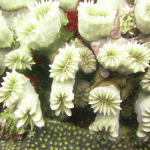
Image: Nature PL
Birds can see a larger spectrum of colours than most of us, and they flaunt a variety of eye-catching plumage. Pigments called melanins, carotenoids and porphyrins made in the bird’s skin produce most feather colours.
Melanins produce black feathers, but depending on the concentration of the pigment granules, they can also range to reddish browns and pale yellows.
Bright red, yellow and orange feathers are produced by carotenoids, which birds generally get from eating plants. These pigments can interact with melanins to produce even more colours, such as olive green.
The final group, porphyrins, appear as a wide range of colours, including brown, pink, red and green. Certain birds, such as parrots, get their bright colours from less-common pigments produced directly in their feathers. In some birds, the structure of the animal’s feathers produces the appearance of certain colours.
The bright iridescent hues on the throats of many hummingbird species, for example, are caused by the splitting of white light into its component colours in a phenomenon known as interference. A special kind of diffraction of light, called the Tyndall effect, can produce the blue colour of many birds, including some species of tanager and blue jay.
In these species, small, finely dispersed reflecting particles — often pockets of air — present in the feathers reflect blue and violet colours. Often, structural colours combine with pigments to produce the colours seen in feathers. For example, the green colour of some parrots is the result of the interplay between structural blue-reflecting feathers and yellow pigments.
Some animals “paint” themselves with so-called cosmetic colours from resources available in their surroundings or from their own secretions. Birds such as hornbills and pelicans change the colour of their plumage by coating it with pigments secreted from a special gland. And some feather colours aren’t produced by birds at all.
The bearded vulture, for instance, splashes itself with red soil to get its bright hue. There are varied reasons some birds paint themselves and others have evolved fanciful displays of colour, the most important of which may be to attract mates during courtship or to signal status.







Leslie
May 17, 2011
Darbas namuose
http://internetinisverslas.lt/2011/02/darbas-namuose/